The Importance of Fast Website Design in Today’s Digital World

In the current digital age, website speed is not just a competitive advantage, but an unavoidable necessity.
Today’s users expect web pages to load in a fraction of a second, and even the slightest delay can lead to site abandonment and loss of visitors.
Fast website design has become more crucial than ever, as it directly impacts #user_experience, #conversion_rate, and #SEO_ranking.
Studies show that even a one-second delay in loading can decrease conversion rates by up to 7%, which means significant revenue loss for businesses.
This educational and explanatory article will help you gain a deep understanding of the factors affecting website speed and familiarize yourself with optimization strategies.
Visitors are impatient; if your site doesn’t load quickly, they will easily turn to your competitors who offer a better user experience.
This is an undeniable reality in digital marketing.
In addition to user experience, site speed is an important factor in search engine rankings like Google.
Google has increasingly focused on metrics such as Core Web Vitals, which are directly related to site speed and visual stability.
Therefore, fast website design is essential not only for your users but also for visibility in search results.
Does your company’s website perform as befits your brand? In today’s competitive world, your website is your most important online tool. Rasaweb, specializing in professional corporate website design, helps you to:
✅ Build customer credibility and trust
✅ Convert website visitors into customers
⚡ Get a free consultation!
Key Factors Affecting Website Design Speed
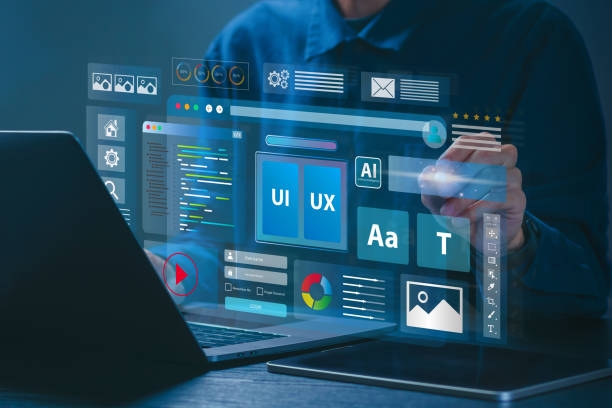
To achieve fast website design, multiple factors affecting site performance must be considered.
Understanding these factors is essential for any developer or website owner.
This analytical and specialized section meticulously examines these elements so you can identify and address potential weaknesses in your site.
The first factor is server and hosting.
The quality of your hosting directly impacts server response time (Time To First Byte – TTFB).
Choosing a reliable and powerful web host that allocates sufficient resources is the first step in fast website design.
Other factors include image size, the complexity of JavaScript and CSS codes, the use of multiple plugins, and the utilization of content management systems (CMS) like WordPress without proper optimization.
Fast website design requires a meticulous examination of each component.
From unoptimized images that consume significant bandwidth to JavaScript scripts that block page loading, all can lead to a slow site.
Lack of caching, lack of file compression, and even a large number of HTTP requests are also among the factors that reduce speed.
These factors must be systematically identified and improved with appropriate solutions.
Optimizing Images and Media for Faster Website Design
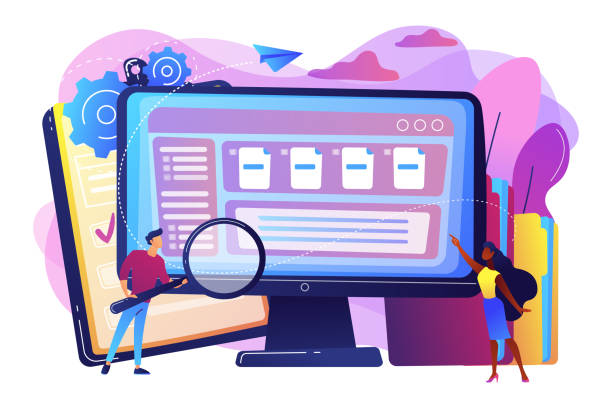
One of the most important factors affecting website loading speed is the size of images and media files.
Often, large and unoptimized images are the primary cause of slow websites.
This guide and specialized section shows you how to achieve fast website design and provide a better user experience by meticulously optimizing images.
Using images with inappropriate formats and sizes can significantly increase page loading time.
To optimize images, there are several techniques.
The first step is image compression.
Many online and offline tools like TinyPNG or Compressor.io can reduce image size without a noticeable loss in quality.
The second technique is choosing the appropriate image format.
For images with many details and colors (like photos), JPEG format is the best option, while for simple graphics, logos, and icons, PNG or SVG are preferred.
Newer formats like WebP are also excellent options for speed, offering high quality and significantly smaller file sizes.
The third technique is Lazy Loading.
With this method, images are only loaded when the user scrolls to that part of the page, not all images at once during initial page load.
This significantly improves initial site loading speed and greatly contributes to fast website design.
Also, ensure your images have appropriate dimensions for web display and avoid very high-resolution images designed for print.
Comparison of Common Image Formats for the Web
| Format | Primary Use | Advantages | Disadvantages | Recommendation for Speed |
|---|---|---|---|---|
| JPEG | Realistic photos, detailed images | High compression, small size | No transparency support, quality loss with high compression | Excellent for complex images |
| PNG | Logos, icons, images with transparency | Transparency support, high quality retention | Higher file size than JPEG for photos | Good for graphics and transparency |
| SVG | Vector graphics, icons, logos | Scalability without quality loss, very small size | Only for vector graphics, not photos | Very Excellent for icons and logos |
| WebP | JPEG and PNG replacement for all image types | Very small size, transparency support, high quality | May not be supported in older browsers (Fallback solution needed) | Best new option |
The Role of Caching and CDN in Accelerating Website Design

One of the powerful strategies to increase website speed and achieve fast website design is the use of Caching and Content Delivery Networks (CDN) mechanisms.
These tools significantly reduce page loading times by minimizing the need to reload information from the origin server and delivering content from the geographically closest location to the user.
This explanatory and specialized section examines how they work.
Caching means temporarily storing information closer to the user so that on subsequent visits or by other users, there is no need to retrieve the same information again from the origin server.
This can be done at the user’s browser level (Browser Caching), at the web server level (Server-side Caching), or even at the level of reverse proxies.
By enabling caching, static parts of the website such as CSS, JavaScript files, and images become accessible to the user faster and contribute to fast website design.
CDN is a network of distributed servers in various geographical locations.
When a user requests content from your site, the CDN delivers that content from the server closest to the user.
This action minimizes network latency and optimizes loading speed for users worldwide.
Using a CDN is almost essential for any website with a global audience and plays a significant role in achieving fast website design at scale.
Does your current e-commerce website design lead to lost customers and sales?
Rasaweb is your solution with modern and user-friendly e-commerce website designs!
✅ Significant increase in conversion rates and sales
✅ Unmatched user experience for your customers
⚡ Get a free e-commerce website design consultation from Rasaweb!
Optimizing HTML, CSS, and JavaScript Code for High Speed

In addition to images and infrastructure, the quality and structure of website coding also significantly affect its speed.
This specialized and educational section explores strategies for optimizing HTML, CSS, and JavaScript codes to achieve fast and efficient website design.
Excessive, unoptimized, and render-blocking codes can significantly reduce page loading speed.
For HTML, using semantic structure, avoiding unnecessary tags, and reducing DOM depth are recommended.
For CSS, techniques such as Minification, which involves removing whitespace, comments, and extra characters, are very effective.
Additionally, combining CSS files to reduce the number of HTTP requests and using Critical CSS (CSS codes required for above-the-fold content) to prevent render-blocking greatly contributes to fast website design.
For JavaScript, optimization is a bit more complex.
Similar to CSS, minification and file concatenation are recommended.
More importantly, asynchronous loading or deferring JavaScript scripts.
This prevents JavaScript from blocking page rendering and allows the browser to display the main content first.
Removing unnecessary scripts, optimizing code using Linting and profiling tools, and optimizing API requests also play vital roles in fast website design.
Choosing the Right Server and Hosting for High-Speed Website Design
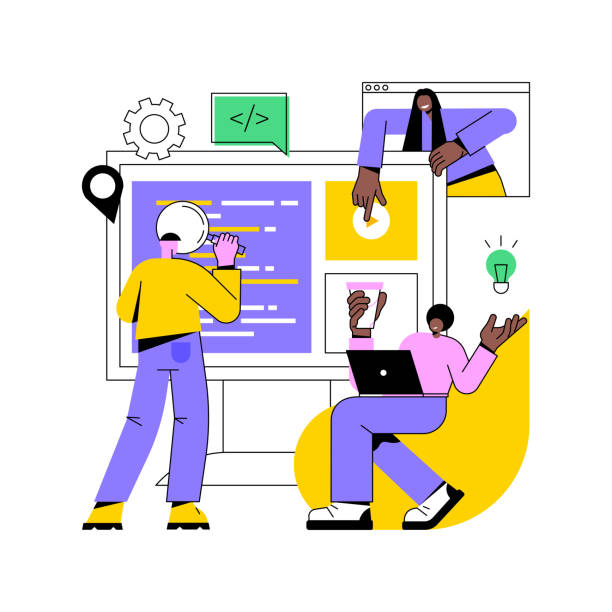
Web hosting infrastructure is the backbone of any website, and choosing the right one plays a pivotal role in fast website design.
The quality of your server and hosting directly impacts server response time, bandwidth, and site stability.
This guide and specialized section helps you become familiar with different types of hosting and criteria for choosing the best option for speed.
Types of hosting include shared hosting, Virtual Private Servers (VPS), dedicated servers, and Cloud Hosting.
While shared hosting may be the cheapest option, it is often not suitable for fast website design with high traffic due to resource sharing with other websites.
VPS and dedicated servers offer more resources and give you greater control over the server environment.
Cloud hosting also provides high flexibility and scalability for managing variable traffic.
In addition to the type of hosting, the geographical location of the server is also very important.
If most of your audience is in Iran, choosing a server within Iran can minimize network latency.
Also, support for new PHP versions, using SSDs instead of HDDs, and benefiting from optimized server configurations (such as using Nginx or LiteSpeed) all contribute to fast and optimized website design.
Choosing a hosting provider that offers these features is a smart investment for the future of your website.
Responsive Design and Mobile User Experience for Fast Website Design
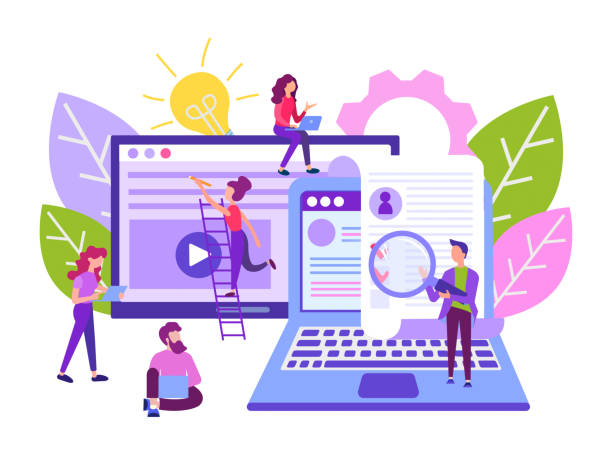
With the increasing use of mobile devices to access the internet, Responsive Design and mobile optimization have become fundamental principles in fast website design.
This analytical and thought-provoking content examines why neglecting mobile users can severely harm your business and how speed and user experience can be optimized with a mobile-first approach.
Responsive design means that your website automatically adapts its layout and elements to the screen size of the user’s device (mobile, tablet, desktop).
This not only helps the site look good on any device but also leads to fast and seamless website design due to not needing to load different versions of the site.
The Mobile-First approach means that website design and development are done primarily for mobile devices and then scaled up for larger screens.
This method ensures your site performs optimally in more limited mobile environments and avoids loading unnecessary resources that are only applicable to desktops.
Loading speed is crucial for mobile users who may be on slower internet connections.
This approach naturally leads to fast and more optimized website design for all devices and reduces the Bounce Rate.
Comparison of Mobile and Desktop Optimization
| Feature | Optimization for Mobile | Optimization for Desktop |
|---|---|---|
| Screen Space | Limited, focus on main content and calls-to-action | Ample, allows for more details and auxiliary elements |
| User Interaction | Touch-based, gestures (swipe, pinch), large buttons | Mouse and keyboard, dropdown menus, hover effects |
| Connection Speed | Variable and often slower (4G/5G) | Usually faster (cable, fiber optic) |
| Content Priority | Essential content, lazy loading of media | All content, high-quality images |
| Navigation | Hamburger menus, simple and direct navigation | Complex menus, mega menus |
Tools for Analyzing and Improving Website Design Speed

To ensure your efforts towards fast website design are fruitful, you must be able to measure and monitor your site’s performance.
Fortunately, powerful tools are available for website speed analysis that identify weaknesses and provide solutions for improvement.
This guide and educational section helps you become familiar with these tools and use them effectively.
One of the most well-known and widely used tools is Google PageSpeed Insights.
This tool is provided by Google and examines key performance metrics like Core Web Vitals.
By entering your site’s address, you receive a comprehensive report on site speed for mobile and desktop, including performance scores, improvement opportunities (such as image optimization or caching), and problem diagnostics.
This tool is essential for anyone pursuing fast website design.
Other tools like GTmetrix and WebPageTest also provide much more detailed information, including full page load time, number of HTTP requests, and a Waterfall Chart showing the order and loading time of each element.
By regularly using these tools and correctly interpreting the results, you can continuously improve your site’s performance and achieve fast and stable website design.
These tools not only highlight problems but also provide practical guidance for resolving them.
Are you frustrated with the low conversion rate of your online store?
Rasaweb is your definitive solution with professional e-commerce website design!
✅ Increase your sales and revenue
✅ Unmatched user experience for your customers
⚡ Get a free consultation now!
The Impact of Speed on User Experience, SEO, and Conversion Rate
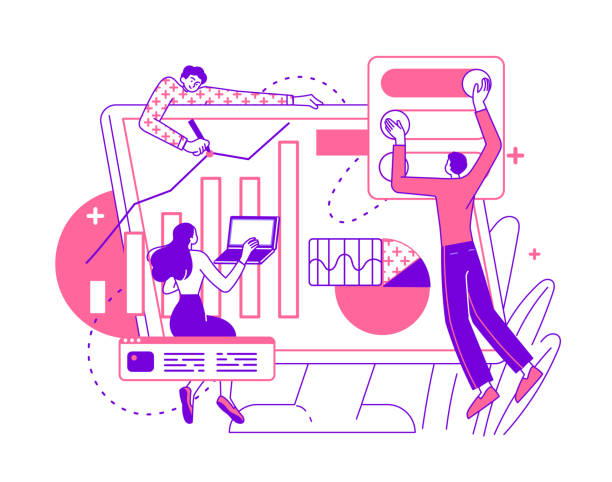
Website speed is not just a technical indicator; it directly impacts three main pillars of your online success: User Experience (UX), Search Engine Optimization (SEO), and Conversion Rate.
This analytical and informative section delves into these impacts and demonstrates why fast website design should be a priority in any digital strategy.
From a user experience perspective, site speed means user comfort and satisfaction.
Today’s users are impatient, and a slow site can quickly lead to frustration and a high bounce rate.
In contrast, a fast website design conveys a sense of professionalism and reliability to the user, encouraging them to stay longer on the site and interact with the content.
This positive experience lays the foundation for a long-term customer relationship.
From an SEO perspective, site speed is a proven ranking factor by Google.
Search engines give higher scores to websites that provide a better user experience, and speed is an integral part of this experience.
Furthermore, site speed indirectly impacts the conversion rate.
A fast site can streamline the purchasing process, registration, or form completion, thereby leading to increased sales and revenue.
Therefore, fast website design not only means faster page loading but also signifies an overall improvement in your business’s online performance.
Maintenance and Updates for Maintaining Fast Website Design

Achieving fast website design is not a one-time process, but an ongoing commitment.
Websites are living entities that require continuous maintenance, updates, and monitoring to maintain their speed over time.
This guide and engaging section shows you how, with a regular maintenance strategy, you can ensure your site always remains at its peak performance.
One of the most important aspects is regular updates for your Content Management System (CMS), themes, and plugins.
New versions often include performance and security improvements that help maintain fast website design.
Also, you should regularly optimize your site’s database, remove unnecessary plugins, and get rid of redundant code that may have accumulated over time.
These routine actions keep your site light and agile.
Furthermore, monitoring site performance using the tools introduced in the previous section is crucial.
This helps you quickly identify any speed drops and address them before they impact user experience and SEO.
As technology advances and web standards change, fast website design strategies also evolve.
Therefore, continuous learning and adapting to the latest techniques and tools are essential to ensure your site always stays a step ahead of competitors.
This journey towards fast website design never ends, and there’s always room for improvement.
Frequently Asked Questions
| Question | Answer |
|---|---|
| What is fast website design? | It refers to the process of building a website that is developed and launched in a short time, usually using ready-made platforms or optimized methods. |
| Why is speed important in website design? | High speed improves user experience, increases SEO ranking, and boosts the conversion rate of visitors into customers. |
| What tools are available for fast website design? | Content Management Systems (CMS) like WordPress, Joomla, and Drupal, drag-and-drop website builders, and fast web development frameworks. |
| What are the advantages of using a CMS for fast design? | Ready-made templates, diverse plugins, easy content management without extensive coding, and a large user community for support. |
| Does fast website design mean low quality? | Not necessarily. By using appropriate tools and methods, a high-quality website can also be designed quickly. |
| What factors affect website design speed? | Project complexity, designer’s experience, choice of platform or appropriate tools, content and image readiness, and effective communication with the client. |
| How is responsive design incorporated into fast website design? | Most fast design templates and tools are responsive by default and require little or no configuration. |
| How much does fast website design cost? | The cost varies depending on complexity, chosen platform, and additional services, but it is usually less than custom design from scratch. |
| How can the loading speed of a designed website be increased? | Image optimization, browser caching, file compression, CDN usage, and choosing suitable hosting. |
| When is fast website design a suitable option? | For small businesses, startups, personal websites, or projects that require quick launch and have limited budgets. |
And other advertising services from Rasaweb Advertising Agency
Smart Google Ads: A combination of creativity and technology to increase sales through custom programming.
Smart Advertorials: An effective tool for increasing sales with the help of intelligent data analysis.
Smart Digital Advertising: A dedicated service for growth in sales based on the use of real data.
Smart SEO: Revolutionize sales with the help of real data.
Smart Customer Journey Map: Designed for businesses seeking online growth through SEO-driven content strategy.
And over hundreds of other services in the field of internet advertising, advertising consultation, and organizational solutions
Internet Advertising | Advertising Strategy | Advertorials
Resources
Website Speed Optimization Guide on DigitalOcean
Fast Website Design Tips on Zolmar
Best Practices for Increasing Website Speed on Stack Overflow
Website Speed Increase Tutorial on Iran Host
? Are you ready for your business to grow and shine in the digital world? Rasaweb Afarin Digital Marketing Agency paves your path to success by offering comprehensive and professional services, including custom website design, Search Engine Optimization (SEO), and content marketing strategies. Build a bright future for your brand with us and take a big step towards progress.
📍 Tehran, Mirdamad Street, next to Bank Markazi, Kazeroun Jonoubi Alley, Ramin Alley, No. 6




